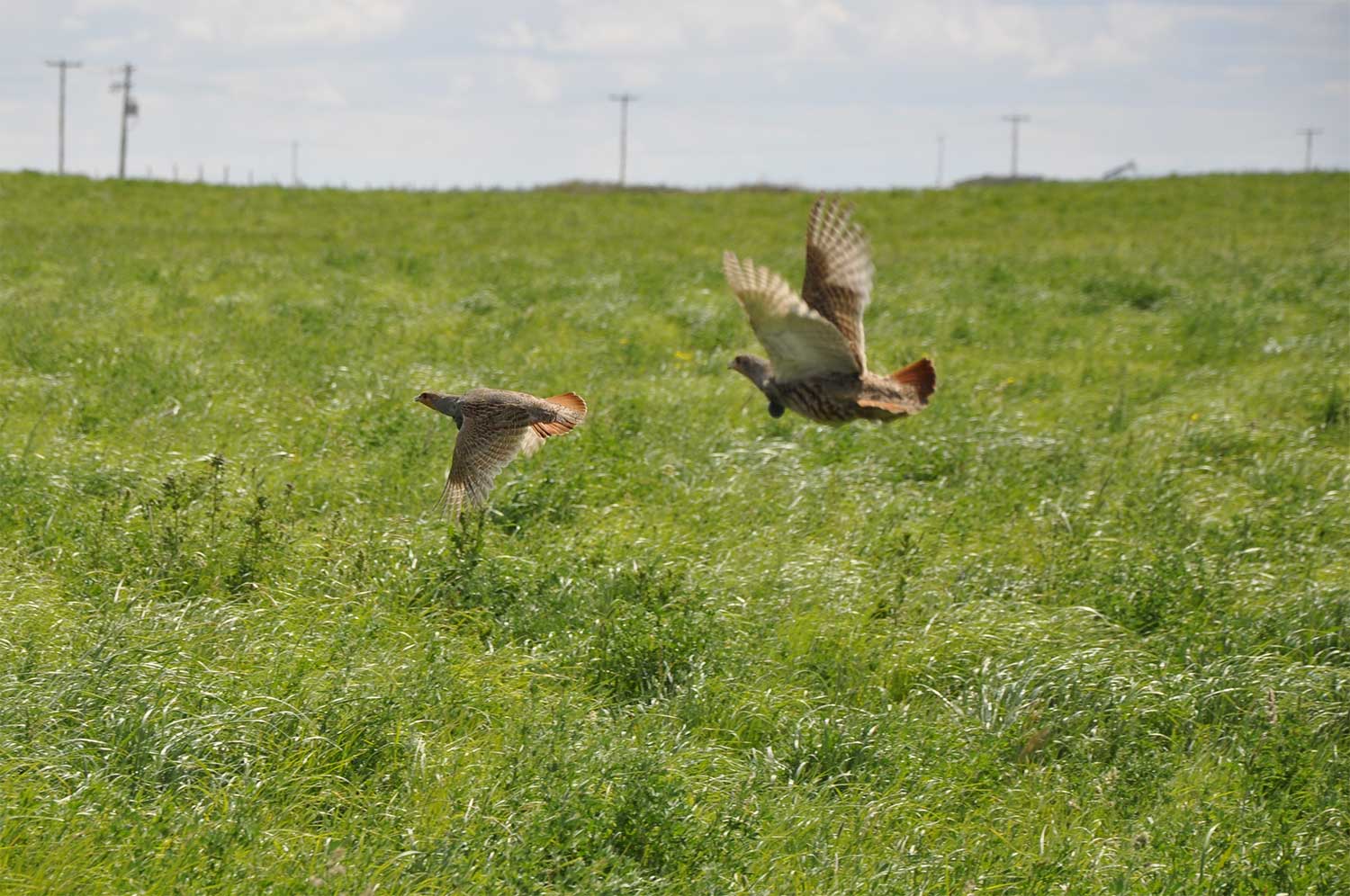Frequently Asked Questions
Alberta Conservation Association (ACA) needs your help to better understand upland game bird trends!
The information needed may seem familiar to those who work with bird dogs. It includes the type of birds flushed or seen, the number of individual birds seen, estimated age of the bird (adult vs young-of-the-year), estimated daily trip duration, and estimated distance walked.
Which species are being surveyed?
Top priority species include sharp-tailed grouse (sharptails), grey partridge (huns), and ring-necked pheasants. However, we are also collecting information on spruce grouse, ruffed grouse, dusky grouse (blues), white-tailed ptarmigan, and willow ptarmigan.
What information do I collect?
ACA will provide you with either a hard copy or digital datasheet, and we ask that you fill in each section of the form. Clear and concise information is ideal. Make sure to identify the species (e.g., sharptails and huns) that you are targeting on each datasheet.
How do I select an area to survey?
You can complete surveys anywhere in Alberta, where you believe there to be good quality habitat for upland game birds (i.e., places you would normally hunt game birds). We suggest you choose locations that are likely to have one or more of the above species. Surveyed areas should possess enough habitat that they can be surveyed over a reasonable amount of time (approximately 30–120 minutes).
Surveys should NOT be completed on pheasant release sites.
ACA will NOT be providing areas for participants to survey.
Can I survey the same place that I did last year?
For those who have surveyed the same spots over the years, we thank you for your continued participation! If you have the time, we strongly encourage you to venture out to new areas, including new Wildlife Management Units (WMU) in addition to completing your historical routes.
What happens to my location information?
We ask that you keep the specific location of your survey(s) to yourself. We all have favourite hunting spots, so let’s keep the location mum. If you survey multiple spots in one year, you can simply identify locations as site 1, 2, 3, etc. on a particular datasheet. We would like to know the WMU where the surveys were conducted, but we will summarize the data across spatial areas that include several WMUs.
What if I want to provide surveys on different days or in two or more locations?
One datasheet should be submitted for each location (i.e., survey site). If you suspect that a survey location did not produce the expected results, you are welcome to survey that same location again another day. However, only submit one datasheet per location per year, preferably the survey with the greatest bird count.
Does it matter when I do the survey during the day?
The survey can be completed at any time of the day.
What if I flush the same covey or bird more than once?
Try to avoid double counting the same bird(s). This can be tricky. It’s important to identify where birds land after a flush so that you avoid counting them more than once.
Can I hunt the birds while I am doing the survey?
Yes, you can hunt while completing the survey: Alberta Hunting Regulations apply.
Do I have to use a bird dog?
We would like participants to use a bird dog, which provides a similar measure of effort making the data more comparable. If you would like to participate but do not have a bird dog, then simply identify that you did not use a bird dog on the datasheet.
Can I survey with more than one bird dog and with other people?
Yes, the more the merrier! A second person can be helpful for marking where flushed birds land to avoid counting them twice. We suggest that any talking during the survey be kept to a minimum to avoid pushing birds that you may never see, such as pheasants.
How does ACA use the data?
ACA summarizes the data collected by species and across regions to better understand trends with annual recruitment, as well as the trends across years and broad geographic areas. Key metrics that we use to track these patterns include the number of encounters (flushes or sightings) per hour and the total number of birds flushed or seen per kilometer walked.
The data is used to develop the Fall Hunting Forecast for Alberta, available online: www.ab-conservation.com/programs/wildlife/projects/upland-game-bird-fall-forecast/forecast/
For more information, please contact Jalen Hulit at [email protected]
Back
